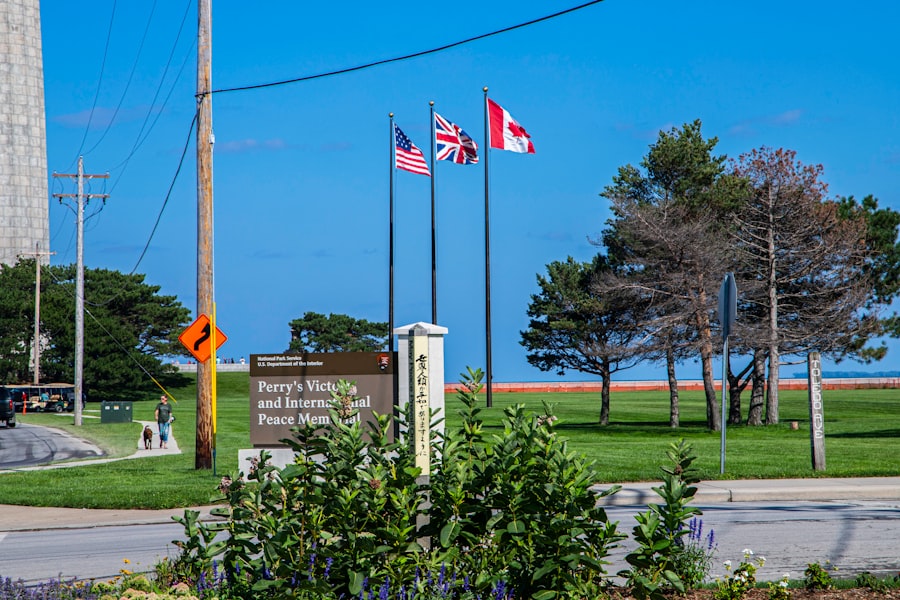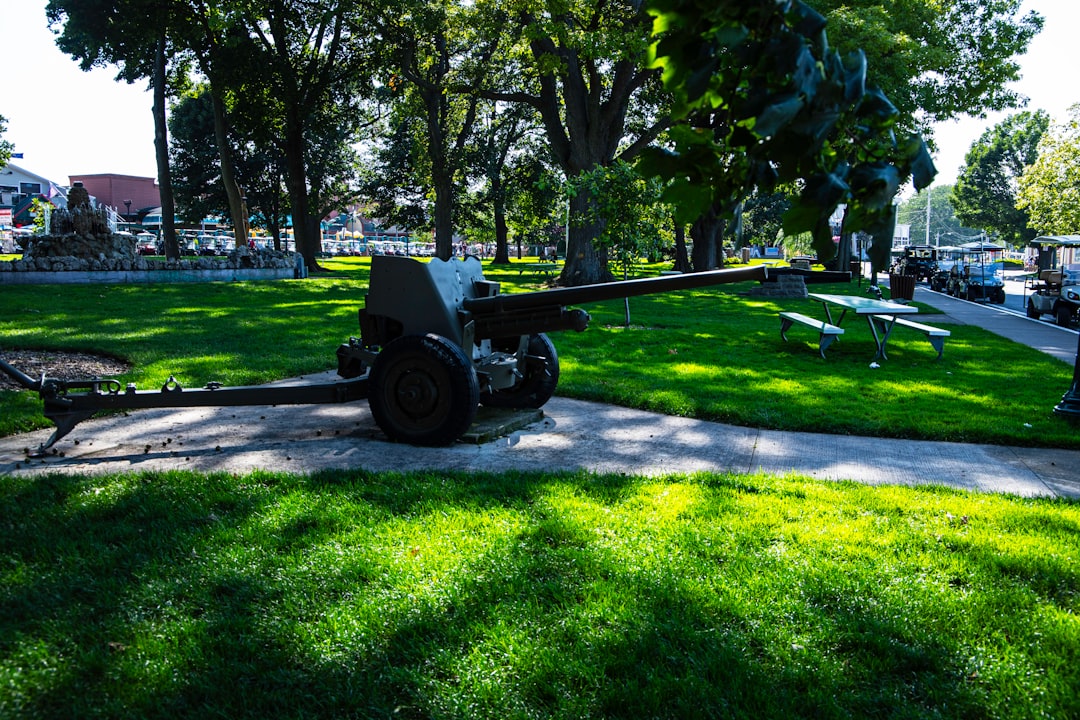The War of 1812, often overshadowed by the American Revolution and the Civil War, was a pivotal conflict that shaped the trajectory of the United States. Emerging from a backdrop of rising nationalism and growing tensions with Great Britain, this war was not merely a struggle for territory but a fight for national identity and sovereignty. The early 19th century was marked by a series of complex geopolitical dynamics, including British interference in American trade, impressment of American sailors, and the desire for expansion into Native American territories.
As these tensions escalated, the stage was set for a conflict that would test the resolve of a young nation. The war officially began in June 1812, but its roots can be traced back to the aftermath of the American Revolution. The United States had gained independence, yet it found itself entangled in the web of European politics, particularly with Britain, which sought to maintain its influence over former colonies.
This complex interplay of factors created an environment ripe for conflict, as the nation grappled with its identity and aspirations on the world stage.
Key Takeaways
- The War of 1812 was a conflict between the United States and Great Britain, with various factors leading to its outbreak.
- Causes of the war included British impressment of American sailors, trade restrictions, and British support for Native American resistance to American expansion.
- The American military was unprepared for the war, lacking proper training, equipment, and leadership.
- British naval dominance posed a significant challenge for the United States, leading to blockades and the burning of Washington, D.C.
- Indigenous peoples played a significant role in the war, with some siding with the British and others with the Americans.
The Causes and Catalysts of the War
Several key factors contributed to the outbreak of the War of 1812, each intertwining to create a perfect storm of discontent. One of the primary catalysts was Britain’s ongoing practice of impressment, where British naval forces forcibly recruited American sailors into their ranks. This blatant violation of American sovereignty incited outrage among citizens and government officials alike.
The notion that British ships could commandeer American vessels and seize their crew members struck at the heart of national pride and autonomy, fueling calls for action against what many perceived as an affront to their rights. In addition to impressment, trade restrictions imposed by Britain further exacerbated tensions. The British were engaged in a protracted conflict with France, leading them to impose blockades that severely limited American trade with Europe.
These restrictions not only hampered economic growth but also fostered resentment among merchants and traders who relied on international commerce. The desire to assert economic independence and protect American interests became a rallying cry for those advocating for war. Coupled with these grievances was the growing ambition for territorial expansion, particularly into Canada and Native American lands, which many Americans believed would solidify their nation’s future.
The Unpreparedness of the American Military

As the drums of war began to beat louder, it became painfully clear that the United States was ill-prepared for the conflict that lay ahead. The American military was small and poorly equipped, a reflection of a nation that had not yet fully embraced the need for a robust standing army. In the years following the Revolution, military funding had been inconsistent, leading to a lack of trained soldiers and adequate resources.
This unpreparedness would prove to be a significant disadvantage as the war unfolded. Moreover, the leadership within the military was often inexperienced and lacked cohesion. Many officers had gained their experience during the Revolutionary War but were not necessarily suited for the challenges posed by a new conflict against a formidable opponent like Britain.
The lack of a unified strategy and clear command structure hampered American efforts on multiple fronts. As battles erupted across various theaters, from the Great Lakes to the Atlantic coast, it became evident that the United States would need to quickly adapt and innovate if it hoped to stand a chance against British forces.
The British Naval Dominance
| Metrics | Data |
|---|---|
| Number of Ships | Over 600 at its peak |
| Number of Naval Bases | Dozens around the world |
| Controlled Waters | Atlantic, Indian, and Pacific Oceans |
| Years of Dominance | From 18th to early 20th century |
One of the most significant challenges faced by the United States during the War of 1812 was British naval dominance. At the time, Britain boasted one of the most powerful navies in the world, with a well-trained fleet capable of projecting power across oceans. This naval superiority allowed Britain to impose blockades on American ports, crippling trade and limiting access to vital supplies.
The British strategy relied heavily on their ability to control maritime routes, which they executed with precision and effectiveness. The impact of British naval power was felt acutely by American forces. While the United States did possess some naval assets, they were vastly outmatched in terms of size and capability.
The few victories achieved by American naval forces, such as those led by Commodore Oliver Hazard Perry on Lake Erie, were hard-fought and often came at great cost. The British blockade not only stifled economic activity but also demoralized American citizens who felt increasingly vulnerable to foreign aggression. As the war progressed, it became clear that overcoming British naval dominance would be one of the most daunting challenges facing the United States.
The Indigenous Peoples’ Role in the War
The War of 1812 also had profound implications for Indigenous peoples across North America, who found themselves caught in the crossfire between warring nations. Many Native American tribes viewed the conflict as an opportunity to resist encroachment on their lands by American settlers. Leaders such as Tecumseh sought to unite various tribes against common threats posed by both American expansionism and British imperial interests.
This alliance with Britain was seen as a means to protect their territories and way of life. However, this partnership was fraught with complexities. While some tribes allied with the British in hopes of securing their sovereignty, others sided with American forces or remained neutral.
The war ultimately led to devastating consequences for Indigenous peoples, as American victory would pave the way for further westward expansion and displacement.
The Failure of American Diplomacy

In addition to military unpreparedness and external threats, diplomatic failures played a crucial role in exacerbating tensions leading up to the War of 1812. Efforts to resolve disputes through negotiation were often met with indifference or outright hostility from British officials. The United States attempted various diplomatic channels to address grievances such as impressment and trade restrictions but found little success in achieving meaningful concessions.
The failure of diplomacy highlighted a broader issue within American foreign policy at the time: a lack of experience and understanding in navigating complex international relations. As tensions escalated, calls for war grew louder among factions within Congress who believed that military action was necessary to assert national sovereignty. This shift towards confrontation marked a turning point in U.S.-British relations, ultimately leading to declarations of war that could have potentially been avoided through more effective diplomatic engagement.
The Economic and Social Impact of the War
The War of 1812 had far-reaching economic and social consequences for both America and Britain. For the United States, the conflict disrupted trade patterns and strained resources as industries struggled to adapt to wartime conditions. The British blockade severely limited access to foreign goods, prompting Americans to turn inward and develop domestic manufacturing capabilities.
This shift laid the groundwork for future industrial growth but came at a significant cost during the war years. Socially, the war fostered a sense of unity among Americans who rallied around their national identity in response to external threats. Despite political divisions that existed prior to the conflict, many citizens found common ground in their desire to defend their nation against perceived injustices.
However, this newfound nationalism was tempered by economic hardships faced by many families during wartime scarcity. As communities banded together to support soldiers and their families, they also grappled with rising inflation and shortages that tested their resilience.
The Role of Political Divisions in the United States
Political divisions within the United States played a significant role in shaping public sentiment towards the War of 1812. The Federalist Party, which had been dominant in earlier years, found itself increasingly at odds with proponents of war from the Democratic-Republican Party led by figures such as President James Madison. Federalists were often skeptical about engaging in conflict with Britain due to concerns over economic repercussions and potential loss of political power.
These divisions manifested in various ways throughout the war, including opposition to military funding and reluctance among some states to support troop mobilization efforts. In New England, where trade with Britain was vital for economic survival, anti-war sentiment ran high among Federalists who viewed the conflict as detrimental to their interests. This internal discord not only complicated wartime decision-making but also sowed seeds of discontent that would linger long after hostilities ceased.
The Lack of Support from American Citizens
Despite initial enthusiasm for asserting national pride through military action, support for the War of 1812 waned as hardships mounted on the home front. Many Americans grew disillusioned with prolonged conflict characterized by military setbacks and economic strife. Reports of defeats on land and sea dampened morale among citizens who had once rallied behind calls for war.
Additionally, divisions within society became more pronounced as opposition groups voiced their dissent against continued engagement in hostilities. Public protests emerged in various regions where citizens questioned whether fighting was worth the sacrifices being made by soldiers and families alike. This lack of widespread support ultimately hindered recruitment efforts and strained resources further as discontent simmered beneath the surface.
The Treaty of Ghent: The End of the War
The conclusion of hostilities came with the signing of the Treaty of Ghent in December 1814, which effectively restored pre-war boundaries without addressing many underlying issues that had sparked conflict in the first place. Negotiations took place in Ghent, Belgium, where representatives from both sides sought an end to hostilities amid growing exhaustion from years of fighting. While neither side achieved a decisive victory or resolution regarding impressment or trade restrictions, both parties recognized that continued warfare would yield diminishing returns.
The treaty marked an important turning point for America as it emerged from conflict with newfound resolve despite unresolved grievances lingering beneath surface-level agreements. In many ways, it set a precedent for future diplomatic engagements where compromise would become essential in navigating complex international relations.
Legacy and Lessons Learned from the War of 1812
The legacy of the War of 1812 is multifaceted; it served as both a crucible for national identity formation and an illustration of lessons learned about governance and diplomacy moving forward. In its aftermath, Americans began to embrace a stronger sense of nationalism rooted in shared experiences during wartime struggles—an identity that would shape future generations. Moreover, policymakers recognized shortcomings within military preparedness and foreign relations strategies that needed addressing if they hoped to avoid similar conflicts down the line.
The war underscored critical lessons about unity amidst political divisions while highlighting vulnerabilities inherent within emerging democracies navigating complex global landscapes. In conclusion, while often overlooked in historical narratives surrounding early America’s development trajectory, understanding nuances surrounding causes leading up to this pivotal conflict provides valuable insights into shaping contemporary discussions about national identity formation amidst geopolitical challenges faced today.
The War of 1812, often overshadowed by other historical conflicts, was a complex struggle that ultimately failed to result in the conquest of the United States by British forces. Several factors contributed to this outcome, including the resilience and strategic prowess of American forces, logistical challenges faced by the British, and the vast geographical expanse of the United States, which made sustained military campaigns difficult. For a deeper understanding of the geographical challenges that played a crucial role in the war’s outcome, you can explore a related article on the topic by visiting this page. This resource provides insights into how the terrain and distances impacted military strategies and outcomes during the War of 1812.
WATCH THIS! The Hidden Reason No One Can Invade America | A Geographical Analysis
FAQs
What was the War of 1812?
The War of 1812 was a conflict between the United States and Great Britain, lasting from 1812 to 1815. It was primarily fought over maritime issues and territorial expansion.
Why did the War of 1812 fail to conquer the US?
The War of 1812 failed to conquer the US for several reasons, including the lack of a clear British strategy, the resilience of American forces, and the distraction of the Napoleonic Wars in Europe.
What were some key battles and events of the War of 1812?
Key battles and events of the War of 1812 included the Battle of New Orleans, the burning of Washington, D.C., the Battle of Lake Erie, and the Treaty of Ghent.
How did the War of 1812 impact the US and Great Britain?
The War of 1812 had significant impacts on both the US and Great Britain. For the US, it solidified its independence and boosted national pride. For Great Britain, it marked the end of its attempts to reassert control over its former colonies.
What were some long-term consequences of the War of 1812?
Long-term consequences of the War of 1812 included the strengthening of American nationalism, the decline of Native American resistance, and the beginning of a period of improved relations between the US and Great Britain.
